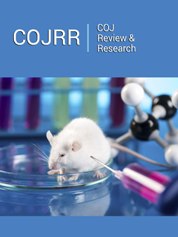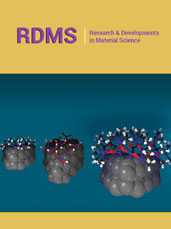- Submissions
Abstract
COJ Reviews & Research
Air Pollution Cause Mental Retardation in Children: Epigenetic Modification, DNA Methylation and MicroRNAs
-
Open or CloseJennifer Le, Rehab A Alshammari, Bandar E Almansouri, Diane E Heck and Hong Duck Kim*
Department of Public Health, School of Health Sciences and Practice, New York Medical College, NY USA
*Corresponding author: Hong Duck Kim, Department of Public Health, Division of Environmental Health Science, School of Health Sciences and Practice, Valhalla, New York, USA
Submission: September 21, 2021; Published: September 27, 2021

ISSN: 2639-0590Volume3 Issue3
Abstract
Air pollution is an emerging burden of environmental health issues across the world. To date, several lines of study highlighted the impact of air pollution with human health and diseases: Cardiovascular diseases, liver damage, kidney damage, and respiratory diseases. Air pollution is the presence of substances or chemicals released into the atmosphere that can harm and deter human health and other living things [1, 2]. There are many different types of air pollutants such as particulates, gases, and biological molecules. It is known that air pollution is directly linked to cardiovascular and respiratory health problems and diseases Siddique [3]. However, there is still debating the premise that air pollution can also harm the Central Nervous System (CNS) and cause impairments to the function and structure of the brain. Health intervention like Poor air quality can cause issues short -term and longterm health effects in elderly citizens and children. The World Health Organization (WHO) estimates that 9 out of 10 people across the world are exposed to high levels of air pollution outside which are emitted during emission of fossil fuels in cars, power plants and many industrial processes [4]. There is plenty of research in mental health and air pollution in adults, however, research conducted during the early development of childhood and adolescence is rare. Interestingly, it was reported that adolescents and young children are affected the most by air pollution [5]. Aspects of organ sensitivity following exposure of air pollution in children, it was postulated that the heart, immune system, lungs and developing brain are vulnerable. At birth, the growth rate of the brain is highest and continues to develop throughout childhood which plays an important role in the child’s attention span, behavior, and memory [6]. This may result in risk of neurodegenerative diseases later in life. Increasing concern indicates air pollution affects health interaction between maternal and fetus during pregnancy which is influenced by unexpected delivery outcomes. The global burden of disease attributed 4.2 million deaths and
 a Creative Commons Attribution 4.0 International License. Based on a work at www.crimsonpublishers.com.
Best viewed in
a Creative Commons Attribution 4.0 International License. Based on a work at www.crimsonpublishers.com.
Best viewed in 







.jpg)






























 Editorial Board Registrations
Editorial Board Registrations Submit your Article
Submit your Article Refer a Friend
Refer a Friend Advertise With Us
Advertise With Us
.jpg)






.jpg)














.bmp)
.jpg)
.png)
.jpg)










.jpg)






.png)

.png)



.png)






